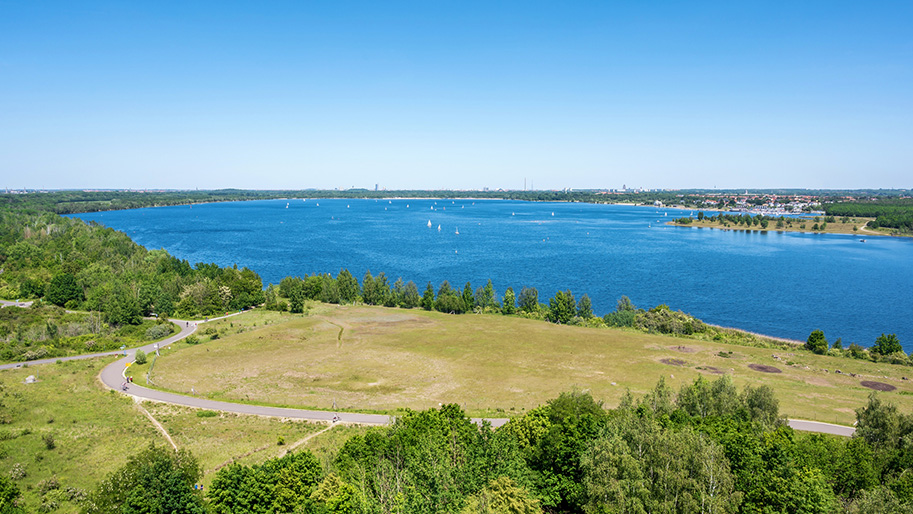Coal Mine to Swimming Pool
 © iStock
© iStock
When all the coal from a pit mine has been extracted, a moonscape remains. Both in the U.S. and Germany, the extraction companies are responsible for reclaiming the landscape. For environmental and ethical reasons many reclamation projects are criticized. In Germany’s Neuseenland, the effort can largely be praised.
For centuries, Central Germany was shaped by the extraction of lignite, or brown coal. Huge open-pit mines littered the landscape, fueling Germany’s, then the GDR’s, energy supply. In the early 1990s, however, amid German reunification and changing energy policies, activism by the citizens of Zwenkau and Markkleeberg resulted in the permanent shutdown of the mines. The question became: what to do with the destructed landscape?
Pit Mine to Swimming Hole
Today 140 pit lakes exist in Central Germany. A swath of land 160 miles long south of Leipzig is known as Neuseenland, or “New Lakeland.” The open mining pits were flooded, and harbors, locks and water connections were made. The landscape was repurposed into a series of lakes and interconnected rivers.
The pit lakes are an important part of the postmining landscape and fulfill ecological as well as socio-economic functions. The area is a tourist and recreation hub where locals and visitors alike enjoy boating, swimming, windsurfing and more.
Clean Water, Clean Conscience
A review by the Helmholtz Centre for Environmental Research determined the lakes have sustained good water quality, which could have been jeopardized by the region’s mining legacy. “Acidification resulting from mining-induced pyrite oxidation has been managed successfully for the majority of the pit lakes,” the authors wrote in Limnologica. By most measures, the pit lakes are a successful example of land reclamation out of Central Germany.
